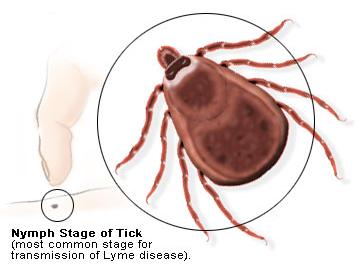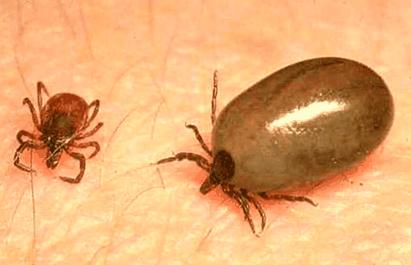Lyme Disease Information
Click here to scroll to the list of available medications ↓
Lyme disease, which is also referred to as Borreliosis, is the result of an infected tick biting a human and passing on the organism which causes Lyme disease. Lyme disease is named for the town of the first cases in 1975, which were discovered in Old Lyme, Connecticut. Lyme disease is now a threat in every state within the United States, most Canadian countries, and some South American countries. If there are ticks, there is Lyme disease. Lyme disease tends to mimic various diseases and can often be very difficult to diagnose. Over 16,000 cases of Lyme disease are reported in the United States annually.
Symptoms of Lyme disease are similar to many autoimmune diseases as well as neurological diseases. Symptoms include either a flat or raised lesions in the area of the tick bite which has the potential to range from 1 to 3 inches in diameter. The lesion often has a white center and red streak like rims or a clear center with redness around it. Other symptoms include muscle pain, fever, lethargy, headache, stiff neck, joint inflammation, itching, or unusual behaviors.

Lyme disease is caused by the transferring of the Lyme disease organism from tick to human through a bite. Lyme disease is an inflammatory disease which is carried not only in ticks but in mice as well. It is rare that Lyme disease is transferred from the bite of a mouse as mice tend to flee rather than seek out humans for any reason. Ticks, being parasites, are interested in humans as a source of food.
Risk factors for Lyme disease are regional. The higher the concentration of ticks, the more likely an individual is to pick up a tick and receive a bite from an infected tick. Walking in wooded areas, high grass, and saturated marsh land increases the chances of picking up ticks infected with Lyme disease as well. Most cases of Lyme disease occur in the second half of spring, summer, and early fall. The Northeast, Upper Midwest, and The West coast are all considered hot spots for Lyme disease infected ticks.
Lyme disease is very difficult to diagnose, and often diagnosis is missed. Symptoms may or may not immediately appear, and thus this makes it more difficult to diagnose. Diagnosis may include a physical examination, which in the advanced stages of the disease will show inflammation of the joints, and heart or brain abnormalities. Antibodies can be found of a blood test known as immunoflourescence is done or a blood test called the ELISA test which is then confirmed with a Western Blot Test.

Untreated Lyme disease can lead to joint swelling, heart problems, and brain abnormalities as well as secondary Lyme disease and Tertiary Lyme disease. These complications can cause problems with mobility, breathing, heart function, and brain function. It is not unusual for someone with Lyme disease to become cranky and irritable without any known cause.
The early stages of Lyme disease can be treated with antibiotics. Anti-inflammatory medications are often prescribed to relieve the joint stiffness associated with Lyme disease. Stronger antibiotics or even intravenous antibiotics may be prescribed for the later stages of Lyme disease. Lyme disease can be complicated to treat in children as some very strong antibiotics can have an adverse affect on developing bones or organs.
The best defense against Lyme disease is defense against ticks. Grassy areas or wooded areas require light colored clothing, long pants that can be secured around the ankle, and shoes. Some ticks are very small, but can still carry Lyme disease. It should be daily practice during the peak months to evaluate family members after being outside for ticks. Ticks are more likely to show up against light colored clothing, but checking the hair and skin even though it was protected by long clothing. Insect deterrents such as sprays and repellent lotions are recommended.
In the event of a tick bite, it is recommended the area be marked with permanent marker and evaluated regularly. This can be difficult where there is hair, thus marking the back or shoulder just below the tick bite can help in relocating the bite. If there are any early signs of Lyme disease a physician should be notified immediately.